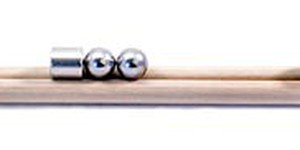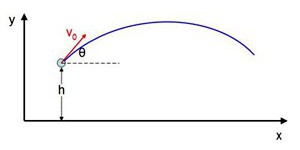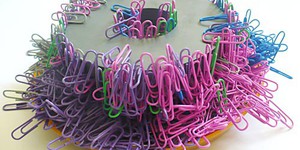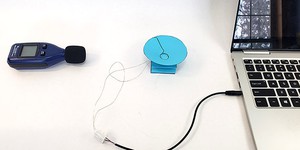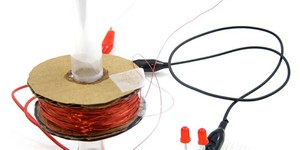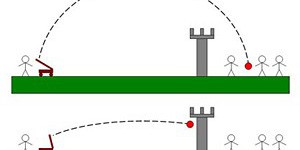Physics Science Projects (9 results)
Physics is the study of matter — what is it made of? How does it behave? What laws or equations describe it?
From subatomic particles, to the Big Bang, modern physicists study matter at a tremendous range of scales. There's a whole lot of interesting physics at the human scale, too.
|
Select a resource
Sort by
|
What can you do with magnets and ball bearings that makes a lot of noise? Why, build a magnetic linear accelerator, called a Gauss rifle, of course! Now, this magnetic accelerator is not a weapon, but a way for you to learn a lot more about physics concepts, like momentum. In this physics science project, you will investigate how far a ball bearing launched by a Gauss rifle will fly, depending on how many magnetic acceleration stages are in the setup and the ball bearing's initial velocity.…
Read more
Featured
Have you heard that garlic powder is supposed to inhibit the growth of bacteria? Which do you think would make a better disinfectant: a solution of garlic powder or a solution of bleach? This project shows you a straightforward way to compare the effectiveness of different disinfectants (or other antimicrobial agents), by measuring zones of inhibition on a culture plate.
Read more
Astronomers can figure out what distant stars are made of (in other words, their atomic composition) by measuring what type of light is emitted by the star. In this science project, you can do something similar by observing the color of flames when various chemicals are burned.
Read more
New
Many visually impaired people use canes to detect obstacles at ground level. What about detecting an obstacle at face level, like a tree branch? What if you need to keep both your hands free and cannot hold a cane? Solve both problems at once with these obstacle-detecting glasses! The glasses use an ultrasonic sensor to measure distance and a buzzer to alert the user of nearby objects. You can customize the design to add or swap out features, like using a vibration motor instead of a buzzer.…
Read more
In physics class, you have probably rolled your eyes at some point after being assigned a "projectile motion" homework problem where you use equations to predict how a ball will move through the air. This experiment will show you just how fun that problem can be by using a real catapult to launch a ball and videotaping it as it flies along its path. Then, you will analyze the video and compare it to what the equations predicted. If you have ever wondered if those equations in your physics…
Read more
Physicists sometimes study matter under extreme conditions. For example, think of the emptiness of interstellar space vs. the unimaginable crush of pressure at the center of a neutron star, or an object dipped in liquid nitrogen vs. the tiles on the space shuttle during re-entry. Here's an experiment on permanent magnets in "extreme kitchen" conditions that you can try at home.
Read more
Can you build a working speaker out of paper? How does a speaker's ability to play low or high-pitched notes depend on its size? Explore the science of sound in this project as you build and test your own speakers in order to answer these questions!
Read more
New
Artificial intelligence (AI) programs can now generate photorealistic pictures of people who do not exist in the real world. How can you tell if a picture is of a real person or a fake, AI-generated person? What features of the picture do people use to decide whether the face is real or AI-generated? In this project, you will explore these questions as you ask volunteers to look at both real and AI-generated pictures of human faces.
Read more
Did you know that you can figure out how much sugar is in a liquid without ever tasting it? In this science fair project, you will learn how to measure the concentration of sugar dissolved in a liquid by using a laser pointer, a hollow prism, and some physics. You will discover how refraction, or the bending of light, is the key to measuring the sugar content of a liquid with a laser pointer.
Read more
Safety Notes about Neodymium Magnets:
Neodymium magnets are very strong. Adult supervision is recommended when using them. Do not let the magnets slam together. They may pinch your fingers or crack. Keep them away from small children, pets, credit cards, and pacemakers.
In the Science Buddies project Human-Powered Energy,
you can learn about the basics of magnetic induction, or how moving magnets can be used to generate an electric current. The detailed physics of how a changing…
Read more
You may have seen movies or read books where armies in medieval times catapulted large rocks or
other objects at castles (or each other!). These armies used different types of catapults to
accomplish different goals — for example, launching things over or into castle
walls to knock them down. In this experiment, you will use a ping-pong ball catapult to lay
siege to a "castle" and find the right settings to hit your targets.
Read more
Whether you have already tried the Science Buddies
Build a Paper Speaker activity or the
Measure the Frequency Response of a Paper Speaker
project, or you just like music and are interested in exploring more about the science of sound, then this project is for you.
You probably know that sound waves can have different frequencies. If not, you can read more about that in the background section
of the Measure the Frequency Response of a Paper Speaker
project. The range of human hearing…
Read more
|
Explore Our Science Videos
Model the Planets of the Solar System
Brazil Nut Effect Explained
Obstacle-Avoiding: BlueBot Project #4


